7 Bugs That Look Like Cockroaches in Florida
In sunny Florida, spotting bugs that look like cockroaches is common, thanks to its bug-friendly climate. From ground beetles to water bugs, these critters can easily be mixed up.
But don't sweat it—knowing exactly what bug you're dealing with means you can manage them better, without unnecessary worry.
Getting the lowdown on these look-alikes helps keep your Florida pad cozy and critter-smart.
Key Takeaways
- Many bugs in Florida look like cockroaches, but understanding their physical traits, behaviors, and habitats can help you tell them apart.
- Water bugs, June bugs, wood-boring beetles, ground beetles, crickets, long-horned beetles, and leaf-footed bugs are common cockroach look-alikes.
- Differentiating between these insects and cockroaches involves noting details like body shape, activity period, preferred habitat, and feeding habits.
- Recognizing signs of an infestation, such as droppings, egg cases, or an unpleasant odor, is crucial for effective pest management.
- Combining DIY prevention methods with professional pest control services is the best strategy to maintain a pest-free environment.
7 Common Cockroach Look-Alikes
Due to their similar appearance, several insects and bugs in Florida are often mistaken for cockroaches.
Here’s a closer look to help you differentiate these look-alikes by their physical characteristics, behavior, and preferred habitats.
1. Water Bugs
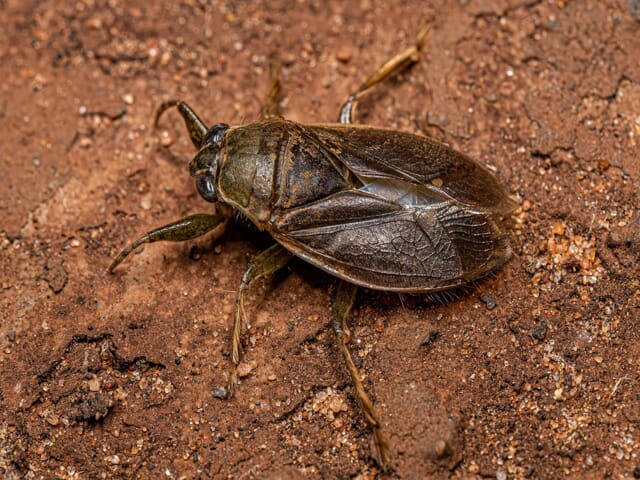
Water bugs are often confused with cockroaches due to their size and dark coloration.
Primarily aquatic, they inhabit bodies of freshwater. They might venture into homes in search of food or shelter.
Here’s a closer look at water bugs and cockroaches:
Aspect | Water Bugs | Cockroaches |
Habitat | Lives in ponds, lakes, and streams. | Prefers warm, moist environments indoors. |
Behavior | Predatory, often found near water sources. | Scavengers, primarily active at night. |
Physical Characteristics | Flattened body, raptorial front legs for capturing prey. | Oval-shaped body, long antennae. |
2. June Bugs
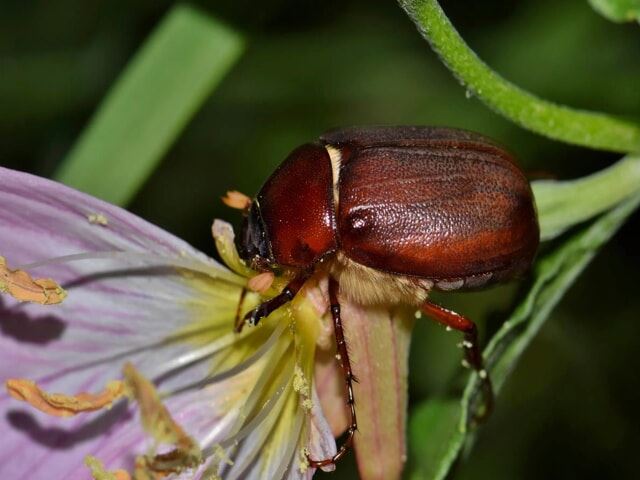
June bugs are named for their peak activity period. Due to their brownish-to-dark color, they can be mistaken for cockroaches.
Unlike cockroaches, June bugs have a distinct lifecycle and are attracted to lights.
Here are the steps to differentiating June bugs from cockroaches:
- Look for a June bug's round, robust body instead of a cockroach's flatter, oval shape.
- Observe the behavior. June bugs are attracted to lights and are more active at night, flying around light sources.
- Note the size; June bugs typically are more prominent and heftier.
3. Wood-Boring Beetles
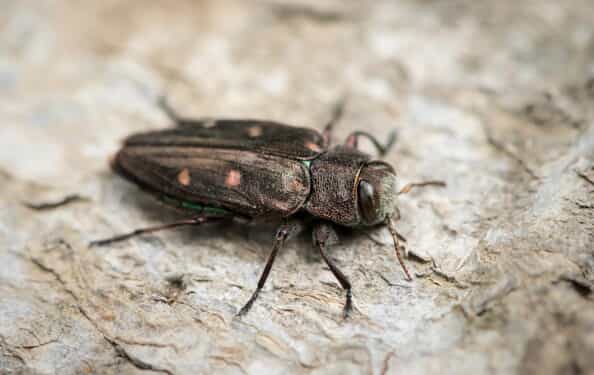
Wood-boring beetles are essential in decomposing wood but can damage homes. Because of their similar wood-loving tendencies, they are often confused with cockroaches.
Here’s how different they are:
Wood-Boring Beetles | Cockroaches | |
Diet | Bore into and consume wood. | General scavengers. |
Habitat | Found in dead trees or untreated lumber. | Prefer moist environments. |
Home Damage | Damage wooden structures. | Generally, do not damage any wood. |
4. Ground Beetles
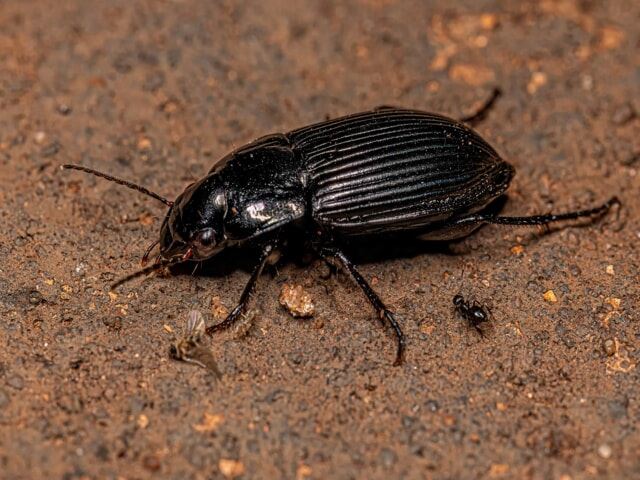
Ground beetles are characterized by their shiny, often black exoskeleton.
Florida is home to various ground beetles that share a humid, warm environment with cockroaches.
To guide you in identifying ground beetles, here’s what you need to know:
- Has hard, shiny wings
- Active at night (nocturnal)
- Usually found on the ground, not in homes
- Does not have the long, flat body shape characteristic of cockroaches
5. Crickets
.2406110933420.jpg)
Crickets are commonly known for their distinctive chirping. They are nocturnal insects like cockroaches, which often leads to confusion if you stumble across one in the dark.
Here’s a comparison between crickets and cockroaches:
Aspect | Crickets | Cockroaches |
Appearance | Have long hind legs for jumping. | Have a flatter, more oval shape. |
Sound | Chirp by rubbing their wings together. | Generally silent. |
Movement | Jump frequently. | Scurry or fly. |
6. Long-Horned Beetles
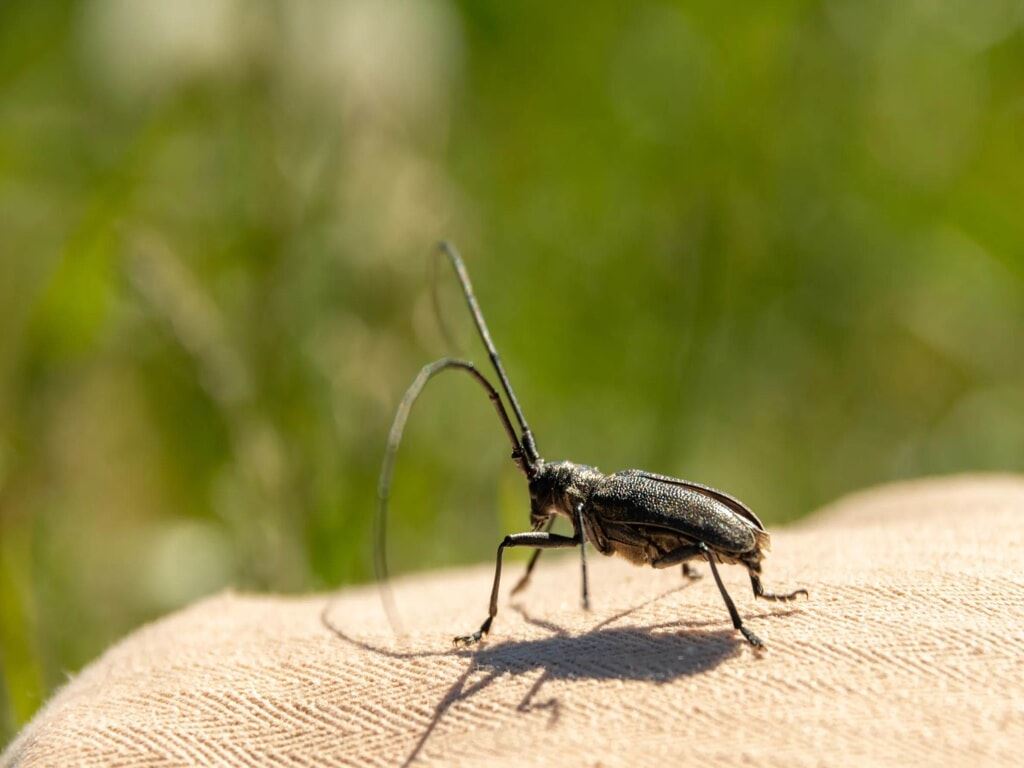
Long-horned beetles are recognized by their elongated antennae, which can be as long as, if not longer than, their bodies.
Mistaken for cockroaches, they play a vital role in the ecosystem but can harm wooden structures.
When identifying long-horned beetles, you need to check the following:
- Long antennae often exceed body length.
- Feeds on dead or dying wood, not household foodstuffs.
- Typically found outdoors in wooded environments, unlike the versatile habitats of cockroaches.
7. Leaf-Footed Bugs
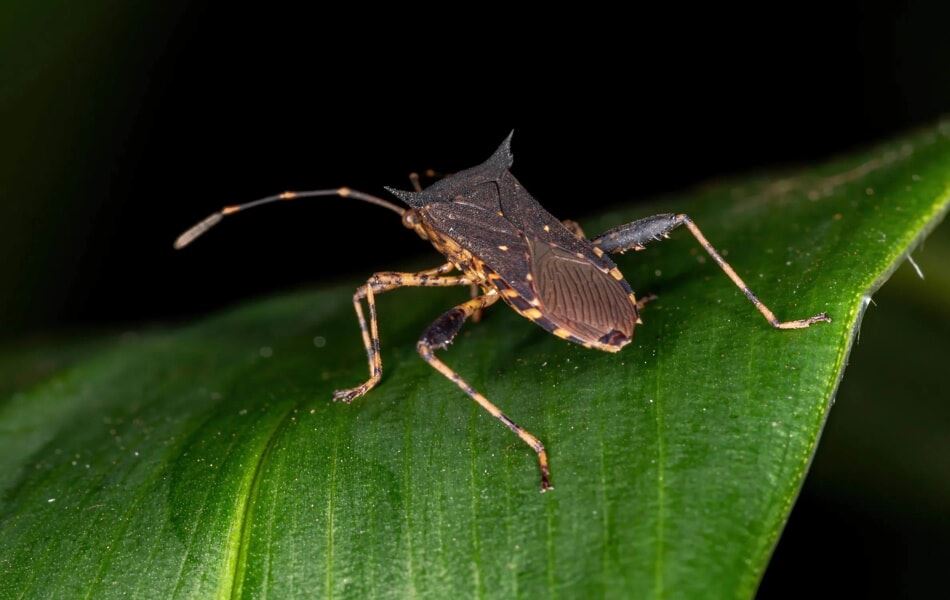
Leaf-footed bugs are named for the leaf-like expansions on their hind legs. They are often found in plants.
Due to their similar body shapes, they are often mistaken for cockroaches. Let’s look at their differences below.
Different Species of Cockroach in Florida
Florida is home to various cockroach species, each distinct in appearance, habitat, and behavior. Here are some types of cockroaches to name a few:
Palmetto Bugs
Often called American cockroaches, Palmetto bugs (Eurycotis floridana) are different cockroaches prevalent in Florida. They can be found in and around palmetto trees.
Unlike other roaches, palmetto bugs are:
Aspect | Description |
Size | Large; about 1.2–1.6 in |
Color | Tan to dark brown |
American Cockroach
The American cockroach is one of the largest species, reaching up to 3 inches long.
These insects prefer warm, moist environments in Florida and pose health risks due to their waste products.
To prevent American cockroach infestations:
- Eliminate standing water sources
- Secure food in sealed containers
Smoky Brown Cockroach
The smoky brown cockroach thrives in warmer climates, especially in Florida.
They tend to gravitate towards areas with high moisture. To distinguishthem from other species, look for:
German Cockroach
German cockroaches are smaller and have two dark stripes on their backs.
They are closely associated with human living spaces, so they can quickly become an issue in homes.
- Their management strategies include:
- Maintaining a clean living environment
Florida Woods Cockroach
Known for its larger size and slower pace, the Florida wood cockroach typically resides outdoors. They are less common indoors but may enter homes.
Oriental Cockroach
Oriental cockroaches are known for their glossy black bodies and preference for damp places. The following list details signs of an infestation:
- Dead roaches in damp areas
- Egg casings in basements or crawl spaces
To manage oriental cockroach issues:
- Address moisture problems
- Seal entry points to the home
Health Risks of Insect-Borne Diseases
Insects resembling cockroaches in Florida may carry various pathogens that can lead to various health risks.
Here's a quick look at some common insect-borne diseases and their symptoms:
Disease | Symptoms |
Wheezing, shortness of breath | |
Diarrhea, fever, abdominal cramps |
Signs of a Cockroach Infestation
Identifying a cockroach infestation can require keen observation.
As homeowners in Florida, you may encounter tell-tale signs that these unwanted guests are taking refuge in places like sewers, basements, and attics.
- Droppings: Cockroach droppings resemble coffee grounds or black pepper and can indicate an infestation.
- Egg Cases: Look for oblong egg cases, known as ootheca, which cockroaches deposit in hidden areas.
- Unpleasant Odor: A musty, oily scent in the home may be a sign of a significant infestation.
- Property Damage: They might feed on and damage items such as books, wallpaper glue, and pet food packaging.
- Live or Dead Insects: Spotting cockroaches, alive or dead, especially during the day, can indicate overcrowding in their hiding places.
- Irregular Smears: Check for marks or smear trails in areas with high moisture.
Pest Control and Prevention Strategies
Understanding how to get rid of cockroaches and similar pests can significantly benefit you.
Here’s how you combine do-it-yourself vigilance and professional services to ensure a pest-free environment.
DIY Solutions
As homeowners, you have several DIY options to prevent and manage minor pest issues:
DIY Approach | Description |
Natural Repellents | Mix equal parts of water and white vinegar to spray around potential entry points as a deterrent. |
Sealing Entry Points | Use silicone caulk to seal cracks around windows, doors, and utility pipes to block access. |
Garden Maintenance | Keep gardens debris-free and trim back foliage to reduce pest-hiding spots. |
Professional Pest Control Service
Professional pest management services provide numerous benefits:
- Inspection and Treatment: After getting a free quote, expect a thorough inspection of your property, followed by a detailed treatment plan.
- Long-term Prevention: A regular maintenance schedule with a professional exterminator helps prevent future infestations.
When to Call a Pest Control Professional
Encountering insects that resemble cockroaches in your Florida home can be quite the cause of a furrowed brow.
It's often hard to distinguish between the many look-alikes—such as the innocuous wood roach or the pesky palmetto bug—and the unwanted German or American cockroach.
Should your valiant efforts not halt the bugs' march, it's time to invite the cavalry—aka professional pest control services (like us, here at Native Pest Management).
